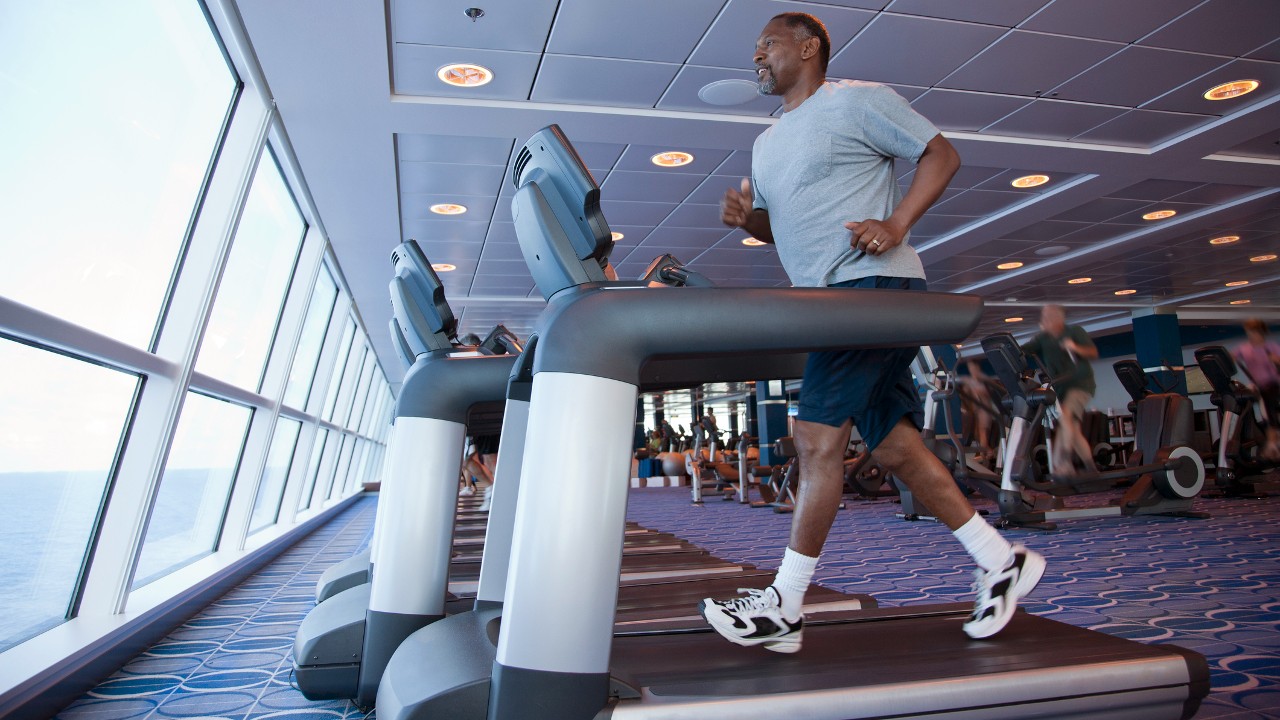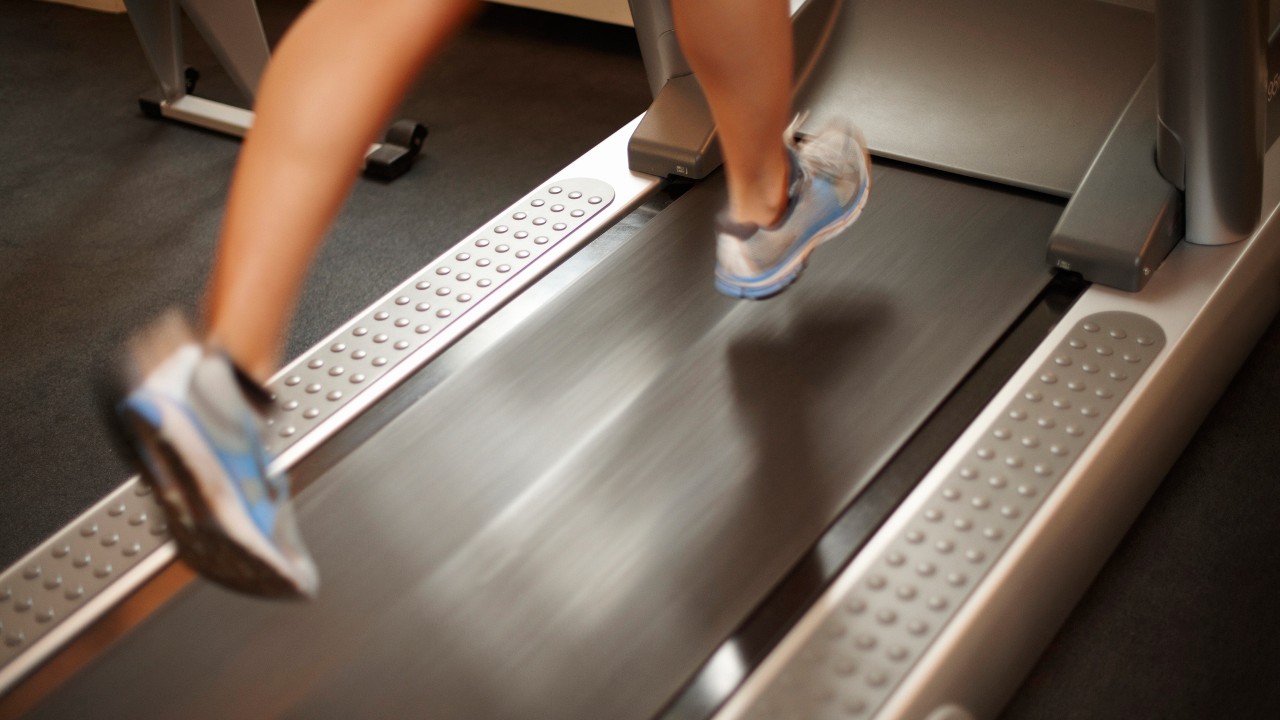Is Running On A Treadmill Bad For You Compared With Running Outdoors?
For the most part treadmill running carries the same injury risk as running outdoors, but there are some pros and cons to consider

Treadmill running gets a bad rap. Sure, running on a treadmill can be a little dull at times, but it’s a reliable option when it’s dark, wet and cold outside – and besides, there are many ways to spice up indoor runs, especially as the best treadmills connect to virtual training apps like Zwift.
However, we weren’t sure if treadmill running carried a similar risk of injury as outdoor running, so we asked three experts to help clear things up: Alex Townsend, a specialist musculoskeletal (MSK) and sports podiatrist, and Yasmin Milne, a specialist MSK physiotherapist, both from Pure Sports Medicine, and Nuffield Health rehabilitation specialist Kelley Blalock.
The takeaway is that the injury risk of treadmill running is broadly equivalent to running outdoors, but as is almost always the case when speaking to experts who know their stuff, the real answer is it depends.
“It depends on so many different variables,” says Townsend. “And it very much depends on what risk you’re referring to a lot of the time. If you’re talking about tripping or slipping, then you could make the argument that the treadmill is a more predictable environment. You could say that it’s ‘safer’.”
The well-known benefits of treadmill running – that you get to avoid bad weather and dark nights – may help to reduce your risk of aggravating existing injuries.
“Wind and rain may mean people put more effort in when they’re running,” says Milne. “Increased effort means increased force through the recovering area. Also when you’re running outside, the time of day can change your mindset – you might run a bit quicker if you’re in the darkness, where you might not feel as safe. You’re not necessarily going to be as relaxed.”

Being on a treadmill also means you can focus on your gait in a controlled environment, which can be useful when you’re aiming to work on something such as your running form, and it’s easier to control your pace.
Get the Coach Newsletter
Sign up for workout ideas, training advice, reviews of the latest gear and more.
“From a physio perspective, if we want someone to return to running at a slower pace than they would do otherwise, we can more easily control their pace and control their load on the injured area,” says Milne. “If they go quicker they’re putting more force in, risking a bit more.”
“People don’t really realise how much impact they’re putting through the ground,” says Blalock. “So if they’re on a treadmill, they can play what I call ‘the quiet game’, or ‘white jeans and muddy puddles’. You try to make each foot land more softly than the last, and that’s going to reduce the impact of the body. I like the visual image of wearing white jeans and running through a muddy puddle, but you don’t want to get your jeans wet.”
Is Running On A Treadmill Bad For Your Knees?
While treadmill running does carry largely the same risk as outdoor running, there are certain types of injuries that may fare better or worse on a treadmill.
“The science isn’t really strong about saying what’s good or bad, but there was one really good paper by Van Hooren et al, which was a meta analysis on ‘is motorised treadmill running biomechanically comparable to overground running’,” says Townsend.
“Largely, the comparisons are yes, it’s close enough. But the evidence in the literature for knee pain and ankle pain is reasonable. Knee pain is better with treadmill running. We see an increase in knee flexion at footstrike on a treadmill compared to track running, and we see a decrease in the range of motion with knee flexion. Often that dictates a shorter stride length, and there are arguments that a longer stride length with a lower cadence could potentially be a contributing factor to patellofemoral pain – front-of-the-knee pain. So you could make the argument that treadmill running may lead to a shorter stride length, which may mean that it could be less risky. I’m really cautious of quoting that, but it may be less risky.
“Whereas if we look at the Achilles, there’s a decrease in the foot ground angle and a reduced propulsion force which essentially increases the ground contact time. The time when you’re not in that flight phase of gait, so one foot is down on the ground for a longer period of time, which does put more load through the Achilles.
“So we could argue that it might be better for front-of-the-knee pain, but it might increase the load on the Achilles.”
“There has been some evidence that has potentially suggested that running on a treadmill reduces bone stress,” says Milne. “This would be for a normal treadmill [not a curved one]. But reducing the amount of force and bone stress can be possibly a bit better for someone coming back from a bone-related injury.”
Is It Better To Run On An Uneven Surface?
One anecdotal piece of advice that keen runners are likely to encounter at some point is that because you land the same way on a treadmill with each footstrike, it could potentially be riskier in exacerbating any niggles you might have. We put it to the experts, who weren’t all that impressed by this theory.
“Personally I don’t think so,” says Milne. “I just flip that and say that if somebody is returning from potentially an ankle injury or knee, and you are running outside, then you do have the risk that you’re on an uneven surface.”
“These anecdotes can be a little bit ahead of the curve sometimes, but there’s no basis or scientific reasoning behind this anecdote,” says Townsend. “You need to get into the nitty-gritty, the research, to prove it.
“But you could say there is an increase in repetition for the same given distance. If you do 10K outdoors, there’s going to be more corners, there’s going to be more change in terrain. You’re going to change your cadence to run around people or to run around a park or a trail. So it’s going to be a different type of load to 10K on a treadmill.”
So overall, running on the treadmill largely carries the same injury risk as running outside, except you’re less likely to fall over on slick pavements. So if you prefer to run indoors at times, then go right ahead. It can make sticking to your running routine much easier.
“The treadmill is great for consistency and adherence,” says Blalock. “It’s always there for you. You can just go and not have to worry about cars hitting you or it getting dark, or any of those safety concerns that people have.”

Nick Harris-Fry is a journalist who has been covering health and fitness since 2015. Nick is an avid runner, covering 70-110km a week, which gives him ample opportunity to test a wide range of running shoes and running gear. He is also the chief tester for fitness trackers and running watches, treadmills and exercise bikes, and workout headphones.









